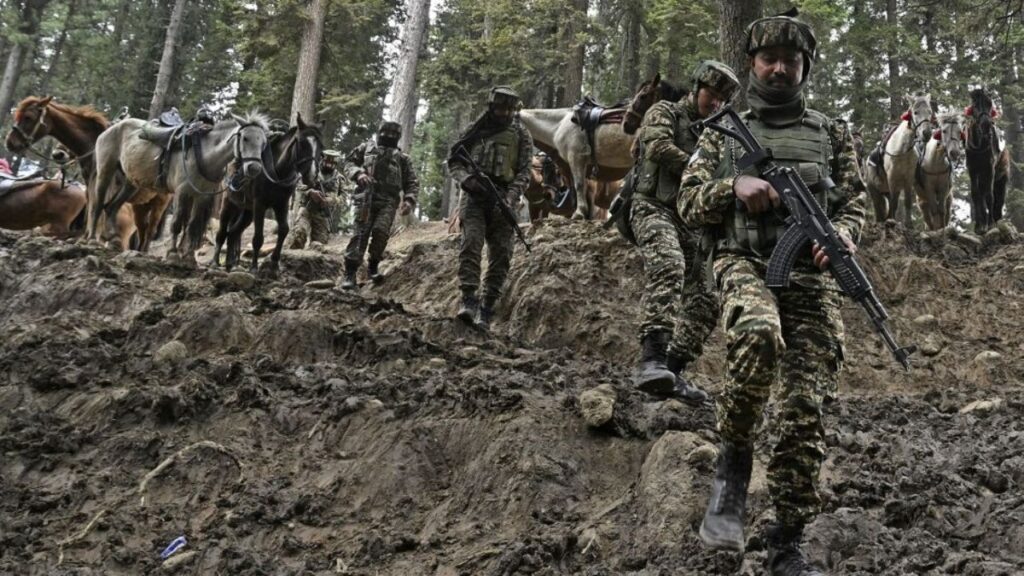
How Islamabad’s military propaganda is unravelling and crumbling
The tragic and condemnable terrorist attack in Jammu and Kashmir’s picturesque town of Pahalgam, claiming 26 innocent lives, has once again thrust Pakistan’s long-standing tactic of strategic deception into the spotlight. While India grapples with grief and responds with measured resolve, Islamabad’s reaction has been characterised by predictable incoherence: aggressive nuclear rhetoric, fabricated military optics, orchestrated social media disinformation, and diplomatic appeals for international intervention. Together, these actions vividly demonstrate a desperate attempt to deflect accountability, reflecting a profound strategic confusion within Pakistan’s establishment.
In the immediate aftermath of the terror strike, which claimed the lives of several innocent tourists, Pakistan’s state-driven propaganda machinery swiftly sprang into action. What followed was a disturbing spectacle—a coordinated disinformation campaign across Pakistani social media platforms aimed squarely at deflecting blame, mocking victims, and amplifying false claims designed to undermine India’s narrative.
The extent and intensity of this coordinated disinformation campaign were laid bare by meticulous analysis. Pakistani social media handles on platform X aggressively circulated hashtags such as #ModiExposed and #IndianFalseFlag. According to detailed OSINT analysis by reputed sources, these hashtags, rapidly trending in Pakistan, were artificially amplified by a limited number of accounts clearly orchestrated to push state-backed narratives. Most disturbingly, the misinformation campaign included grotesque AI-generated videos mocking grieving families and disrespectfully caricaturing Indian leadership, actions that breach basic humanitarian norms and diplomatic decorum.
Also Read | India cracks the whip again, bans all Pak imports, mails and parcels, bars port access to ships
Simultaneously, misinformation tactics became more elaborate and malicious. For instance, false rumours were systematically propagated alleging malicious claims, such as the removal of senior Indian military leaders like Northern Army Commander Lieutenant General Suchindra Kumar, and even absurd assertions of an Indian Rafale jet being shot down by Pakistani forces. These outrageous fabrications were swiftly debunked by India’s official fact-checking channels like PIB Fact Check, clearly demonstrating India’s commitment to transparency and truth against deliberate misinformation.
However, beyond these blatant propaganda actions lie even deeper contradictions within Pakistan’s strategic messaging. A glaring example emerged where Pakistani journalists, mainstream media and social media prominently featured alleged footage of Pakistan Army Chief General Asim Munir boldly inspecting frontline positions along the Line of Control (LoC). Netizens, prominent journalists and OSINT specialists alike promptly identified the visuals as recycled footage from 2022—an embarrassing revelation exposing Islamabad’s desperation to project military strength amidst dwindling internal confidence in its armed forces.
Further compounding this embarrassment was a recent Pakistan Air Force (PAF) propaganda video explicitly designed to showcase military robustness. Ironically, the video prominently displayed visuals from advanced international military assets—including SpaceX’s Falcon 9 rocket launches and S-300 air defence systems, which are not even remotely part of Pakistan’s arsenal. Swiftly identified and mocked by OSINT communities and analysts, these glaring missteps severely damaged Pakistan’s credibility, reinforcing perceptions of its dependence on borrowed imagery to bolster domestic morale.
Also Read | India plots double financial strike on Pakistan to stifle terror funding, jittery Islamabad reacts
On the diplomatic front, the chaos was even more pronounced. Defence Minister Khawaja Asif and Railway Minister Hanif Abbasi openly escalated rhetoric to nuclear threats, brazenly stating that nuclear options remain viable should Pakistan’s “existence” be threatened. Such overt threats stand in direct contradiction to Prime Minister Shehbaz Sharif’s simultaneous appeals for a “neutral, transparent investigation” into the terror incident. To add another layer of confusion, Pakistan’s Interior Minister vigorously promoted narratives specifically targeting Western audiences with claims of imminent Indian military aggression—an obvious attempt to elicit urgent international intervention and diplomatic sympathy.
This troubling incoherence among Pakistan’s civilian and military leadership reveals a serious lack of coordinated strategic communication and highlights internal political fissures. The Pakistani leadership appears fundamentally unsure of its own strategy: simultaneously brandishing threats to domestic audiences and projecting victimhood externally. Such contradictory messages not only undermine diplomatic credibility but also significantly dilute Islamabad’s capacity to effectively mobilise international opinion. Adding to these acute contradictions is a long-standing internal morale crisis which has been brewing within Pakistan’s military ranks. Such challenges significantly weaken operational readiness and erode morale, leaving Pakistan strategically vulnerable precisely at a time when regional tensions remain high.
Compounding these internal security concerns, Islamabad’s ongoing military mobilisation in response to perceived Indian threats is rapidly draining its fragile economy. Independent analyses indicate Pakistan incurs millions of dollars daily due to heightened military alert status, exacerbating its already critical economic vulnerabilities, including dwindling foreign exchange reserves and rising external debts. Clearly, Islamabad’s current aggressive posture is economically unsustainable.
Historically, Pakistan’s strategy of provoking incidents through proxies and subsequently pleading for international mediation has been a familiar and increasingly ineffective pattern. In past cases, notably after Uri, Pathankot, and Pulwama, Pakistan consistently followed similar scripts. However, in recent times, the global community, particularly key stakeholders like the United States, the United Kingdom, and the United Nations, has displayed discernible reluctance to engage directly, advocating restraint rather than active mediation. This growing diplomatic isolation further shows Pakistan’s declining strategic leverage and reveals Islamabad’s desperation to force international engagement through provocations and disinformation.
Also Read | Bangladeshi Islamists protest interim govt’s proposal for women’s rights
In sharp contrast to Pakistan’s chaotic narratives, India has maintained commendable strategic maturity and composure. Avoiding inflammatory rhetoric, India’s calibrated response post-Pahalgam reflects confidence in diplomatic clarity, operational readiness, and strategic steadiness. This measured Indian response starkly highlights Pakistan’s frantic and unsustainable tactics, which increasingly appear born out of insecurity rather than strength.
Pakistan’s elaborate smoke-and-mirrors propaganda reveals more weakness than strength. Islamabad’s coordinated misinformation, contradictory diplomatic signals, the military’s moral bankruptcy, and strained economic resources collectively highlight a severe and growing strategic desperation. As India continues to expose and counter this deception effectively, Pakistan’s incoherent narratives crumble rapidly under scrutiny.
For India, the clear path forward remains steady diplomatic engagement, vigilant military readiness, and proactive transparency in combating disinformation. The international community is increasingly aware of Islamabad’s tactics, diminishing their efficacy. Pakistan’s strategic confusion today vividly illustrates a fundamental truth: deception and propaganda can never sustainably replace genuine strategic depth or credible military capability.
In its attempts to weaponise misinformation and exploit tragedy for propaganda, Pakistan risks falling into its own strategic trap, a reality increasingly clear to observers worldwide.
The author is a Defence & Strategic Affairs Analyst, a media consultant, and author of ‘Kashmir’s Death Trap: Tales of Perfidy and Valour.’
Disclaimer: The views of the writer do not represent the views of WION or ZMCL. Nor does WION or ZMCL endorse the views of the writer.





Responses